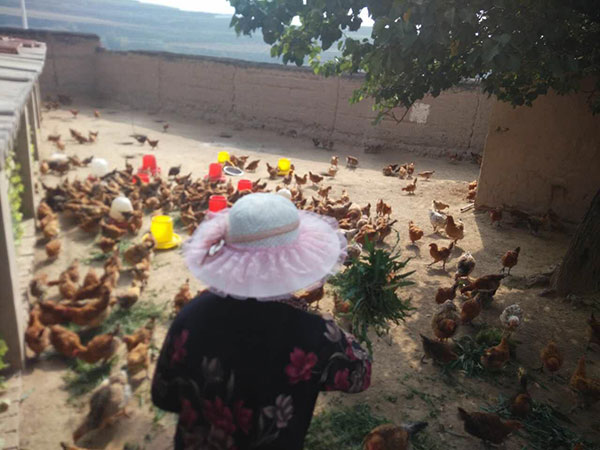


Fancy a Kindle? Take the Long March quiz
 |
|
The farm in Shenjialing, a mountaintop village outside Lanzhou. [Photo/chinadaily.com.cn] |
It was tiny.
It appeared to be only as wide and long as the barn that sat next to it, invoking a size comparison to a tennis court instead of a soccer field.
"This is just the first garden, right?" I asked. She looked at me like the idiot I am and explained that, when done correctly, small plots of land can yield huge amounts of produce and profit, if done correctly and sustainably. The seemingly miniscule garden would yield more than enough for them and their clients in the coming year.
As such, I wasn't completely surprised by the scale in which the farmers in Shenjialing, a mountaintop village outside Lanzhou, were operating. The small pens full of chickens hardly seemed like enough to provide an income and food for the dozens of farmers involved in the cooperative, but thanks to a financial boost from growing organically, the farmers can see an increase of value per chicken of up to 20 RMB. When many of the villagers were living under the poverty line (2,800 RMB per year) before the farm began growing organic products, that boost of 20 RMB per bird is huge.
They've also taken to utilizing their surroundings, using weeds and grass grown in the surrounding area to occasionally feed the chickens for almost no cost, and a smaller carbon footprint than hauling feed to the top of a mountain. There is also an abundance of solar ovens, harnessing the sun to cook food instead of electricity or gas.
The cooperative is also playing to the market. Of course natural foods can be grown in smaller amounts while still yielding more profit, but they have also invested in white lilies. The roots of these plants take nine years to mature, but once they're harvested, those delicacies go for a high market price.
Using alternative farming practices is hardly a new technique when it comes to helping lift people out of poverty. The most prolific example would be the coffee industry.
While a majority of the coffee industry is still reliant on big farms and massive bean roasters, niche coffee growers, roasters, and retailers have been steadily carving away portions of the market. Regardless of the labeling — fair trade, rainforest certified, organic, direct sale — most niche coffees have the ultimate impact of transferring more money back to the men and women who grow the beans than in traditional systems. This extra money has built schools, transformed communities, and even saved lives.
These alternative farming approaches have had substantial positive impacts on communities around the world, from Costa Rica to rural China. As long as demand for products that are not only good for the Earth and the body, but also the people who make them, it will remain a key component to reducing poverty everywhere.
